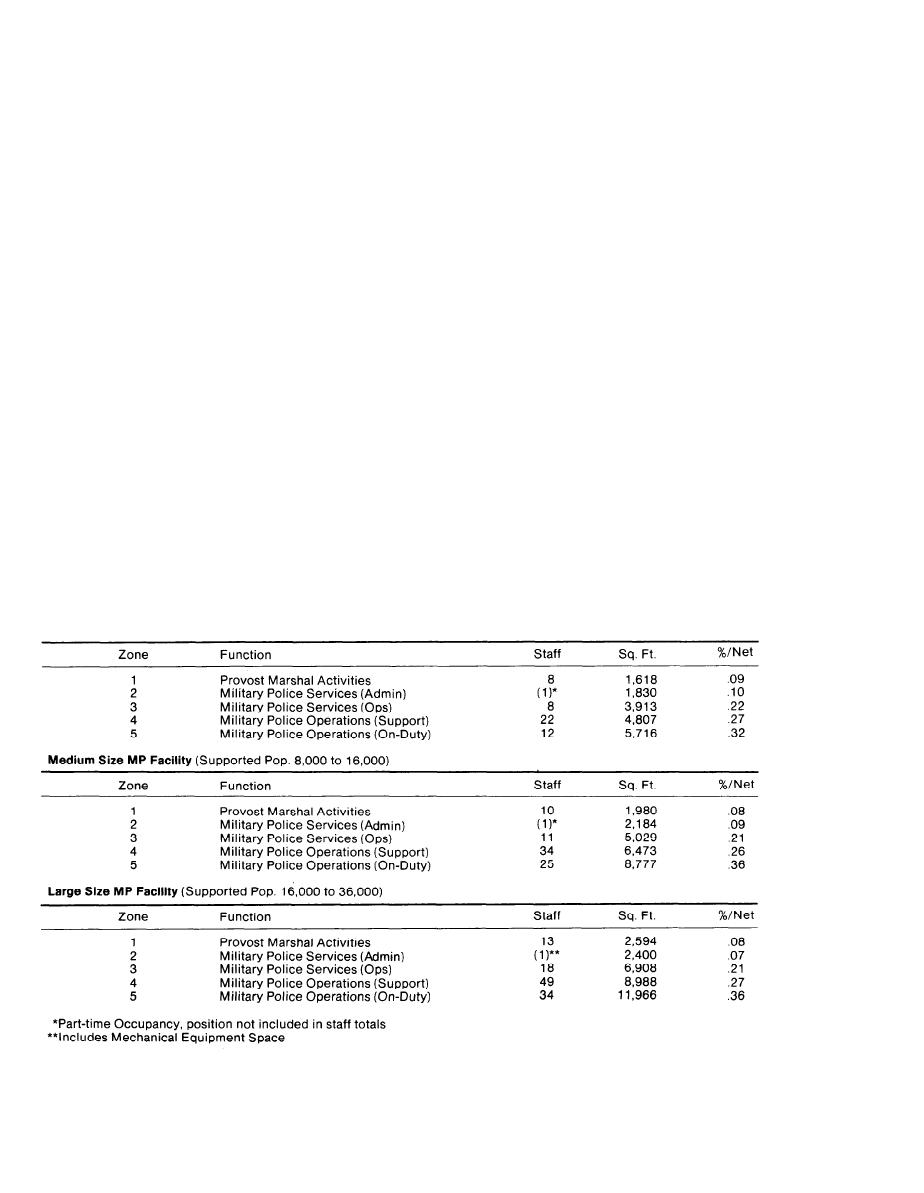
DG 1110-3-146
Design Guide: Military Police Facilities
Criteria for Upgrading Existing Facilities: Pre-Planning Decisions
December 1979
unique or unusual to the conditions of individual sites
mediate- and long-term building and site upgrading
and buildings tend to diminish the accuracy of this
costs as well as the maintenance and operating cost
reverse use of project feasibility guidelines.
of using existing facilities with the construction,
maintenance and operating costs of new construction.
(2) Partial Upgrading The need for partial new con-
struction can be determined on a zone-by-zone basis
(1) Feasibility of Large-Scale Upgrading To illus-
by identifying a limited number of essential require-
trate the feasibility of large-scale upgrading in terms
ments for upgrading. For example, an analysis of the
of space and staff requirements, upgrading costs are
preliminary estimate of upgrading requirements may
compared in Table 5-4 to new construction costs.
indicate that the need for totally new facilities will be
These costs are related to the gross area require-
limited to MP operations activities or that major re-
ments for totally rehabilitated or converted existing
construction will be required only in the On-Duty/MP
facilities. The three points indicated on the graph
desk area. In such cases, the using service should
represent three example designs in Chapter 6. Space
study the possibility of accomplishing these partial
needs for each example are based on the require-
upgrading requirements as part of a larger program
ments for a full range of functional activities provided
of either total rehabilitation of existing facilities or total
within optimum physical relationships. By using a
replacement by new construction. The percentages
factor of 50 percent for allowable upgrading costs,
of the project shown in the example space allocations
it is possible to predict the feasibility of individual up-
contained in Table 5-5 should be used for guidance.
grading projects as well as the possibility or desir-
In general, upgraded space should have space allo-
ability that totally new construction will be an accep-
cations similar to new construction. Again, where 50
table upgrading alternative. The reverse use of this
percent of new construction costs are exceeded by
form of analysis might assist the using service in
typical rehabilitation/conversion approaches, totally
determining the size and scope of activities that could
new facilities should be provided.
be reasonably accommodated by existing space. For
(3) Alternatives to Total Replacement When the
typical situations, it will be helpful. However, the struc-
need for relocation of existing operations is identified
ture of some MP organizations or activities and the
and the conversion of existing facilities seems most
physical constraints and opportunities that are
Table 5-5
Example Space Allocations
Small Size MP Facility (Supported Pop. 8,000 & Below)
5-6



 Previous Page
Previous Page
